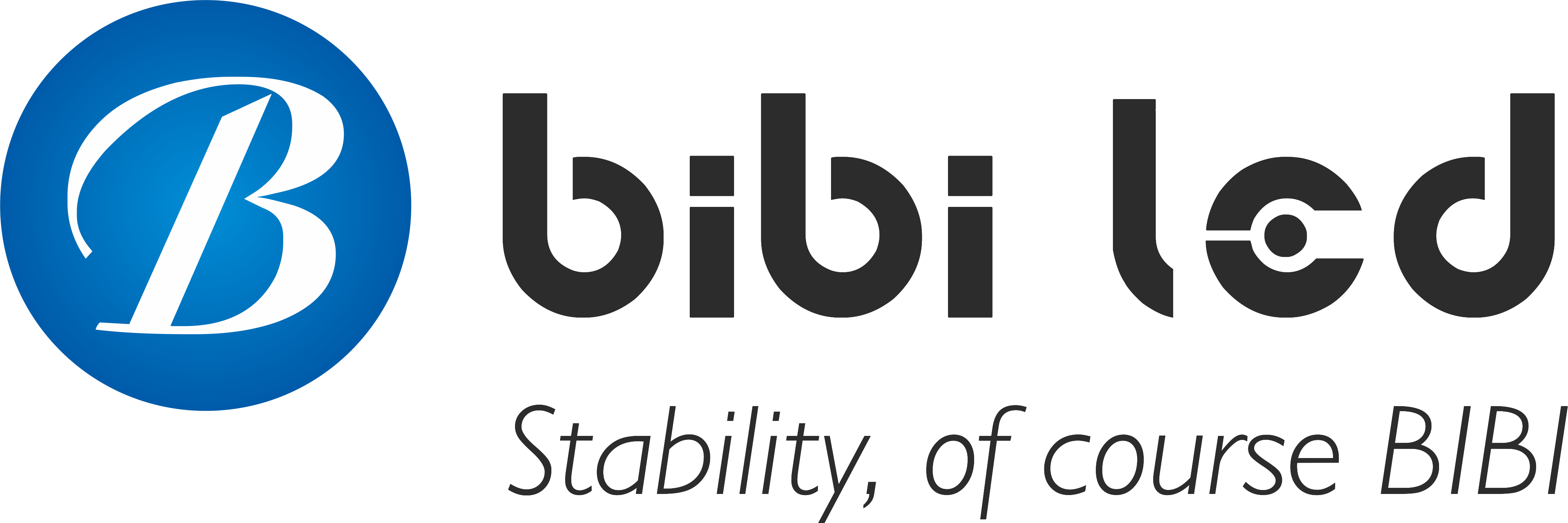序章
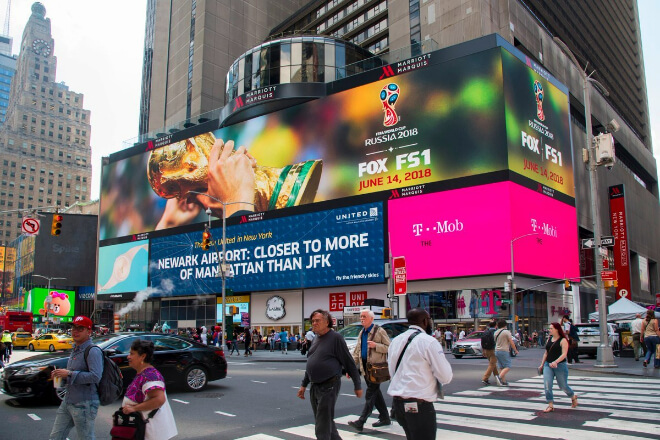
How often should the content of LED広告スクリーン be updated to truly attract the audience and improve the advertising effect?
If the update is too frequent, the audience may not have time to receive the complete information. If the update is too slow, it is easy to cause visual fatigue.
This article will explore the mystery of the frequency of content updates on LED advertising screens to help you find the most suitable update rhythm and make the advertising effect more effective.
目次
1. Why does "update frequency" directly affect the advertising effect?
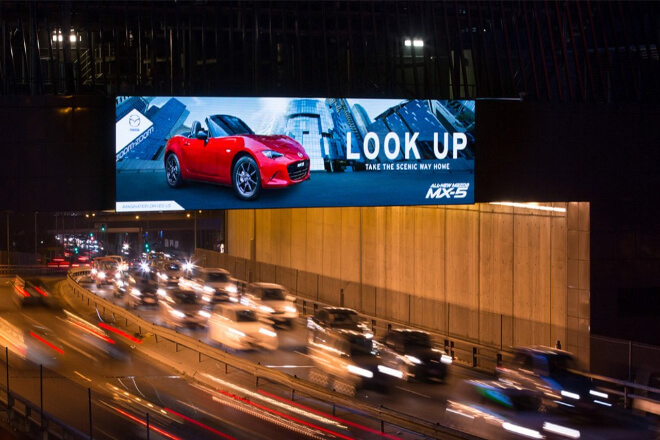
1). Freshness of content vs. visual fatigue
If LED screen advertising is always the same, the audience will soon “automatically block” it.
Just like you walk the same road every day, you will not even look at the advertisements posted on the roadside.
The human brain is naturally “immune” to repetitive things, especially passive information such as advertising.
If the content is not changed for a few days, the audience will be tired of it, and the advertising effect will naturally be greatly reduced.
On the contrary, if the content is updated frequently, even if it is just a change of color or copywriting, it will make people’s eyes bright and their attention will be drawn back.
Therefore, keeping the content fresh is actually the most direct way to fight “visual fatigue”.
2). Audience repetition rate and attention mechanism
LED screens are usually placed in places with large traffic, such as ショッピングモール, subways, and office buildings, where many people pass by every day.
If the content of the advertisement is not changed, the same group of people will completely lose interest after watching it several times, or even feel disgusted.
There is a concept of “advertising fatigue” in psychology, which means that the effect of watching an advertisement too much will become worse.
Therefore, the update frequency should be adjusted according to “who will see it repeatedly”.
For example, in places with a fixed crowd, such as subway entrances, it is best to change the content every 3-5 days.
While in places with large changes in traffic, such as commercial streets, it can be changed once a week.
In short, don’t let the audience feel “this again”, but make them feel “hey, this is interesting”.
3). Competition with other media for “sight”
The current advertising environment is too competitive. LED screens not only have to compete with other billboards for attention.
But also have to compete with everyone’s mobile phones, headphones, and even roadside stalls for attention.
The audience’s time and attention are limited. Whoever has more “moving” content will be more likely to be seen.
If the content of the LED screen is not changed for a long time, it is easy to be regarded as a “background board,” and no one will pay attention to it.
But if the content is updated frequently, and even small changes can be made according to time, weather, and festivals, it will appear particularly “playful” and easier to stand out from many media.
To put it bluntly, the update frequency is your weapon in the “attention battlefield”. The more flexible, the more likely you are to win.
2. What problems will be caused by too frequent updates?
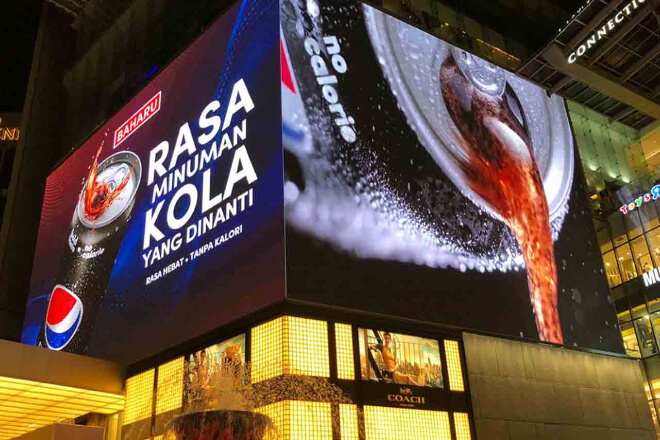
1). Users jump before receiving complete information
The display time of LED screen ads is usually short, especially in places with large traffic, where viewers may only stay for a few seconds.
If the content is updated too frequently, such as switching the screen every few seconds, the audience may not have time to read, understand.
Or even remember the content of the ad before the screen jumps to the next one.
In this way, the communication effect of the ad will be greatly reduced or even completely ineffective.
2). Waste of operating resources
Frequent content updates mean that design and production resources need to be continuously invested.
For example, the content of the ad needs to be changed every week or even every day.
Not only do designers need to continuously produce creative ideas, but operators also need to frequently upload, debug and publish.
This high-frequency update will greatly increase labor costs and time costs, especially for some small and medium-sized enterprises or projects with limited budgets.
Which may cause resource waste and even affect other, more important marketing work.
3). Frequent dynamic changes may cause visual interference
The LED screen itself has high 輝度 and bright colors. If the content changes too frequently.
Such as fast flashing and frequent screen switching, it may cause visual interference to the audience and even cause discomfort.
Especially at night or in a dimly lit environment, too frequent changes can easily make people feel irritable or tired, which in turn reduces the acceptance and favorability of the advertisement.
In serious cases, it may also cause complaints or safety hazards (such as affecting the driver’s attention).
3. What opportunities will be missed if the update is too slow?
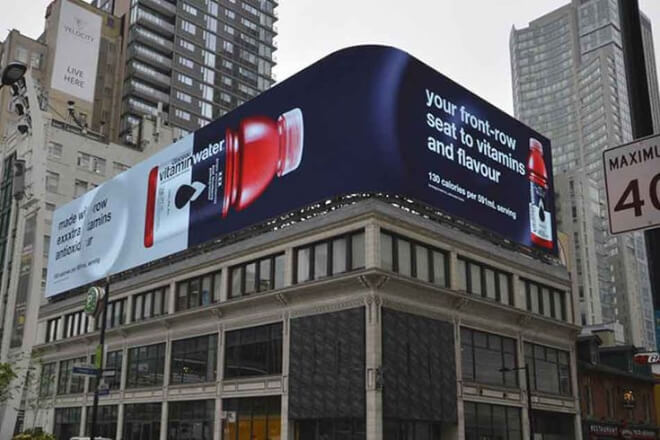
1). The content is old, and the audience is easily “immune”
If the LED screen advertisement does not change the content for a long time, the audience is likely to have “visual fatigue”, gradually lose interest in the advertising content, or even ignore it completely.
Just like you walk the same road every day, you won’t even look at the advertisements posted on the roadside.
The human brain is naturally “immune” to repetitive things, especially passive information such as advertisements.
If the content does not change for weeks or even months, the audience will be tired of it, and the advertising effect will naturally be greatly reduced.
2) The season/promotion/event misses the best time window
If the advertising content is updated slowly, it is easy to miss some important marketing nodes, such as holidays, seasonal changes, promotions or hot events.
For example, Christmas ads are still broadcast during the Spring Festival, or winter clothing is still promoted in the summer.
This “time dislocation” will make the audience feel that the brand is unprofessional and ungrounded, and may even have a negative impression.
Only by updating the content in time can we seize these golden marketing opportunities and improve the timeliness and relevance of the advertisement.
3). Competitors grab the attention of users first
In areas with dense advertisements, LED screens not only have to compete with other billboards, but also compete with other surrounding brands for the attention of the audience.
If your content is not updated for a long time, and your competitors frequently launch new content and new ideas, the audience will naturally be more easily attracted by their advertisements.
In this way, your brand will be at a disadvantage in the competition for attention, or even be completely ignored.
In short, if the update is too slow, not only will the audience lose interest in the advertisement, but also miss important marketing opportunities, and even be preempted by competitors.
Therefore, it is necessary to reasonably plan the update frequency and keep the content fresh and timely to maximize the effect of LED screen advertising.
4. Content update frequency recommendations in different usage scenarios
1). ショッピングモール/retail stores:
Customers in shopping malls and retail stores love novelty. If they see the same advertisement every day, they probably have no interest in it.
Therefore, slightly change the advertising content every week, such as changing promotions.
New product recommendations, etc., so that customers can find something new every time they come, and it feels quite fresh.
However, it cannot be completely changed. The overall style and theme can be changed once a month, such as changing seasons or holidays.
Or if there is a big event in the store, this will make customers feel that the mall is novel, and it will not make people feel messy because of too many changes.
In this way, customers can see something different every time they come to shop, which will make them feel better, and they may even buy more!
2). Fast food chains/convenience stores:
Customers of fast food restaurants and convenience stores have a strong sense of time, and they basically buy things according to the three meals. Therefore, the content of the advertisements must also follow the time.
From 7 to 10 in the morning, breakfast advertisements are played, such as hot sandwiches, soy milk and fried dough sticks.
From 11 to 2 in the afternoon, lunch advertisements are switched to highlight burgers, set meals, etc.
From 5 to 8 in the evening, dinner and supper are promoted, such as kebabs, hot drinks, etc.
In this way, customers know what to eat as soon as they see the advertisement, which is very convenient.
And now, many screens can automatically switch content, which saves worry and effort, and customers also think it is very considerate.
3). Outdoor transportation hubs (subways, stations):
Subway stations and stations are crowded with people, and everyone is in a hurry, so they don’t have time to stare at an advertisement for too long.
Therefore, the advertisements should be changed frequently, about every 3 to 5 seconds, so as to catch everyone’s attention in a short time.
Moreover, the content of the advertisement must be simple and clear, not too complicated; otherwise, passengers will not understand anything at a glance.
If you catch up with the morning and evening rush hours, when there are many people, it is very important to be able to convey information quickly.
Also, if it is raining or snowing outside, or there is a traffic jam on the road, timely updating of weather forecasts, traffic tips, etc., will also be very useful to everyone, and they may even take a second look.
4). Community announcement screens:
The audience of community announcement screens is mainly residents in the community, and everyone can see it every day, so updating too frequently will make people feel annoyed.
If it is urgent information, such as community activities and notifications, it is enough to update it once a week, so that everyone can see the latest news every time they go out.
If there is nothing particularly urgent, updating it once a month is enough, such as property fee notifications, community event previews, etc.
Keep the content simple so that everyone can understand it at a glance, which can not only meet everyone’s needs but also prevent people from feeling “bombarded” by advertisements.
5). Brand-related large screens (image ads):
Brand image ads are mainly used to make people remember the look and feel of the brand.
Therefore, there is no need to change the content frequently. Just change the main visual once every quarter.
For example, spring can be fresher, summer can be more lively, autumn can be more cozy, and winter can be warmer. This way, you can follow the seasons and keep the brand image stable.
If you change too frequently, it will make people feel that the brand has no fixed style and is easy to forget. Therefore, it is better to change it once every quarter.
5. How to judge whether the "update frequency" is appropriate?
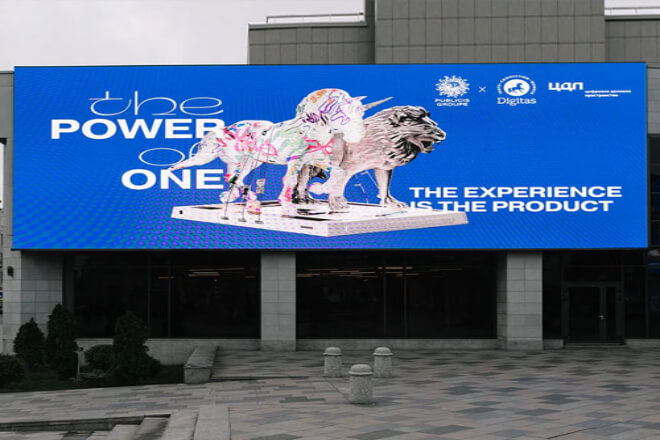
The most direct way to know whether the frequency of advertising updates is appropriate is to see the audience’s reaction if the audience’s eyes drift away immediately when they see the advertisement.
Or skip it directly, it may be that the content is too old, or the updates are too frequent and annoying. For interactive screens, changes in click-through rate are also critical.
If the click-through rate can increase by 30% when the advertisement is updated before, but it only increases by 5% now.
Then you may have to consider changing the content. Then look at how long the audience stays in front of the screen.
If people used to stop and watch for a few seconds, but now they rush past, it may be time to change the content of the ad.
In short, these small details can tell you whether the audience still cares about your ad.
In addition to observation, asking the audience directly is also a good way. You can do a simple questionnaire survey.
Such as asking “Do you remember what we said in the ad?” or “Do you think this ad is interesting?”
If most people answer “I don’t remember” or “I don’t have much impression”, it may be that there is a problem with the frequency of content updates.
Sometimes, it is also very intuitive to see the audience’s reaction directly on the spot.
For example, when the audience sees the ad, whether their eyes light up, or they have no reaction, or even frown, these can provide you with clues.
After all, the audience’s feelings are the most important, and they are the real “judges” of the ad.
Now, many LED screens have supporting data dashboards that can display the number of ad playbacks, audience stay time, interactive data, etc., in real time.
Through these data, you can clearly see which content is popular and which content is ignored. For example, compare the data from different time periods.
When the update frequency is high, does the audience stay longer or shorter? Does the click-through rate increase or decrease?
Through these comparisons, you can roughly judge whether the update frequency is appropriate.
You can also set some key indicators in advance, such as “audience stay time of more than 10 seconds is considered effective viewing” and “click-through rate of more than 10% is considered successful interaction”.
Then measure the advertising effect based on these indicators to see if it meets expectations.
In short, data will not lie. Look at these analyses more, and you can find the most suitable update rhythm.
6. Recommended content rotation and scheduling strategy
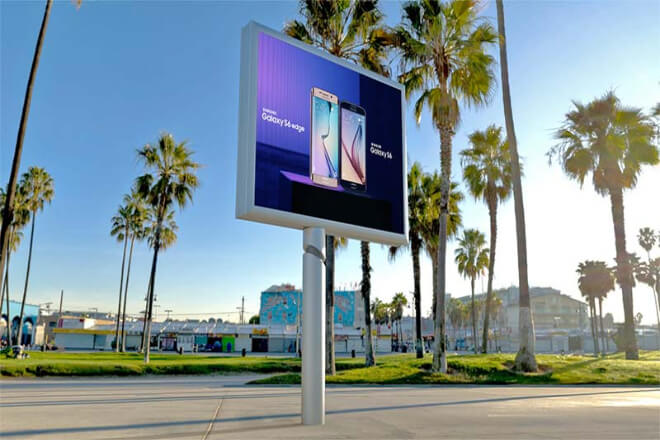
1). Develop a content “echelon library”:
Imagine that your advertising content is like a football team, with a main lineup, a substitute lineup, and a few emergency ones.
The main content is your star player, such as the core information of the brand and the main product.
Which should always be placed in a prominent position. Auxiliary content is that which can help the main content add points.
For example, customer reviews and short stories make the advertisement more warm. Backup content is what can be used at any time, such as sudden hot spots and temporary promotions.
In this way, no matter what the situation, you can have the right advertising content on the stage, and you can also ensure the richness and freshness of the content.
2). Use A/B testing to rotate content performance
A/B testing is like doing a “small experiment” for advertising to see which version is more popular.
You can prepare two sets of content, one focusing on visual impact and the other focusing on emotional resonance, and then release them at the same time to see the audience’s reaction.
For example, if the audience stays in front of version A for a long time and has a high click-through rate, it means that version A is more effective.
Through this test, you can not only find the most popular content, but also save a lot of time and energy and avoid busywork.
3). Make a “theme periodic table” to schedule according to festivals, hot spots, and promotions
Advertisements must also follow the rhythm, just like dancing to the beat. You can make a “theme periodic table” in advance and list all the important festivals, hot events, and promotions of the year.
For example, promote New Year’s promotions during the Spring Festival, promote cool products in summer, and some sports peripherals when the World Cup comes.
In this way, your advertisement can keep up with everyone’s attention. Not only will it not be ignored, but it can also attract more eyeballs by taking advantage of the hot spots.
4). Reasonably allocate the content of the broadcast time throughout the day (dynamic + static combination)
During the day, the audience’s mood and needs are changing, so the advertising content must also be adjusted accordingly.
For example, in the morning, everyone is full of energy, so you can play some dynamic ads full of vitality.
At noon, everyone is tired, so let’s play some relaxing static ads to give everyone a break; at night, when there is a large flow of people, play dynamic ads to attract attention.
Dynamic ads are like dancing, which can quickly grab attention; static ads are like quiet paintings, which make people feel at ease.
Combining these two, the advertising effect of the whole day can be taken into account.
7. 結論
The content update frequency of LED advertising screens seems simple, but it is actually very complex. Have you found the update rhythm that suits your scene?
If you are still hesitating, you may wish to refer to the suggestions in this article, combine the actual effect data, and flexibly adjust the strategy.
After all, only ads that really attract the audience’s attention can bring the best communication effect.
最後に、LEDディスプレイについてもっと知りたい方は、 お問い合わせください.
